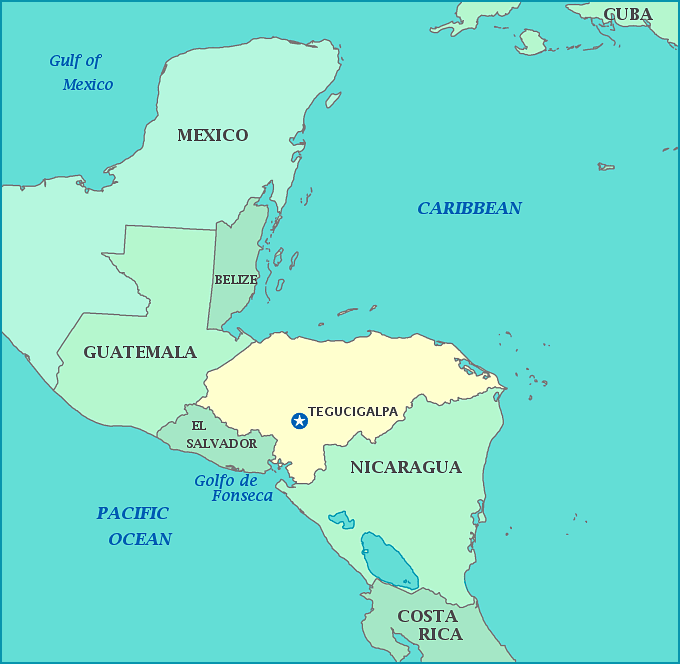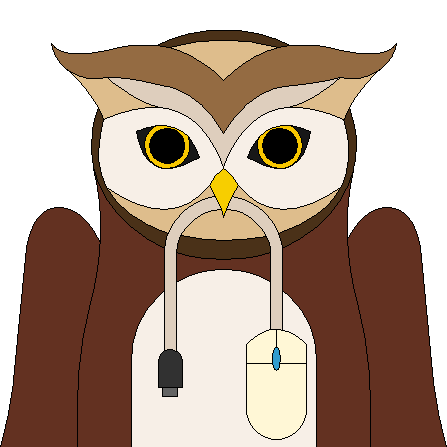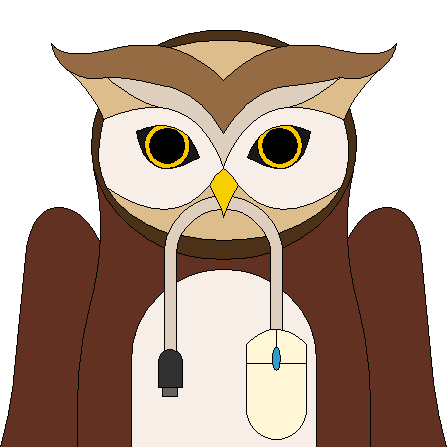
Print this map of Honduras US States and Capitals Map Quiz
Free Maps, Map Puzzles and Educational Software: Owl and Mouse Educational Software
Honduras
Along with most of Central America, the land was claimed by the Spanish. The land was deemed rather useless and for the most part ignored, leaving English and Scottish settlers to claim the South as British Honduras, while the North retained the title of Spanish Honduras. Both colonies saw frequent attacks by each other's crown colonies, as well as by the Dutch and French. Spanish Honduras was preferred by the Spanish at first and today is known as Honduras or the Republic of Honduras officially.
Before the Spanish arrived, the area was inhabited by the Lenca, Pech, Maya, and Sume. Cristobol do Olid was sent to conquer the land and enslave the natives, but more effort went into arguments over who would control the land and owner it t. In 1524, the land was claimed as part of the Kingdom of Guatemala, part of New Spain, However, it would only be in 1540 that the land was settled and the natives enslaved to work in the plantations or mines; ¬those that did didn't die from the diseases the Spanish had brought with them. Despite the delay, the land was prosperous in use of resources. By 1545 Honduras had 2,000 slaves, most of whom had been moved to the mines.
As with the rest of Central America, the country declared independence from Spain in 1821 as The Federal Republic of Central America, only to split away and declare itself independent in 1838. US control and government corruption soon went hand in hand, dominating most of the history of Honduras, beginning with President Sierra Bonilla. He quickly made efforts to suppress liberals and criticism and doled out many exemptions and tax cuts for US banana companies, allowing them to take over railroads, ports, and most of the land.
Nicaraguan president Zelaya took offense at this alliance and allowed exiled Honduran liberals to hide in his country and encouraged them to attack Bonilla's government. The invaders established a junta, which was short lived as the US dispatched Marines to Puerto Cortez to protect their banana crop lands. Bonilla was forced to step down as president and later Mexico and the US called together five Central American countries to the Central American Peace Conference to sign and ratify the General Treaty of Peace of 1907 and establish the Central American Court of Justice.
By 1913, the United Fruit Company of the US dominated Honduras land and the economy with the banana trade. It controlled two major railroads and the US army was stationed to suppress riots for workers' rights, especially in 1903, 1907, 1911, 1912, 1919, 1924, and 1925. Tensions worsened towards the end as 1920 to 1923 saw seventeen coups and uprisings, as well as legal encroachment on US influence on Honduran politics and policies. In order to strong-arm influence and power back, the US asked other Central American countries not to interfere or aid revolutions in each other's countries. US efforts towards installing and forcing the resignation of presidents only proved to spur Hondurans to further violence and legal action until Carias used force to declare himself President of Honduras.
Armed conflict broke out between Honduras and the US, with the latter claiming it would never recognize a president who had gained office by revolution or armed rebellion instead of by fair elections. Soon US efforts were overwhelmed until 1925 when violence began to die down and things began to run more smoothly for workers and US companies. In 1930, the banana trade peaked as the world's greatest fruit producer, then fell sharply thanks to the Great Depression, taking the rest of the Honduran economy with it. Thousands were laid off, workers stopped in protest, and within a year, the president was forced to borrow $250,000 from fruit companies to ensure the army would be paid for putting down worker strikes which had begun again.
In 1932, Tiburico Carias took office with official and fair elections and without riots against his running or winning in the polls. Carias bought arms from El Salvador and crushed uprisings as he took power from congress, repealed voting rights from women and minorities, restored the death penalty, and increased the army until he finally became a full fledged dictator in just a few short years. Despite his acts of oppression and grabbing power, he prevented financial collapse and paid off debt to foreign investors; his efforts towards the army meant a severe reduction in influence from US corporations, including on workers' wages and rights, as well as land ownership. Efforts were made from 1936 to 197 to remove Carias from power, but all ultimately failed. Tension between the leader and people grew sogreat that US intervention was seen as a boon this time. While the US urged Carias to step down, he negotiated a compromise of fair elections in 1948; after the Us agreed, Carias had all potential opponents exiled and aided the campaign of his chosen successor, Juan Manuel Galvez.
Galvez gave favors and land to US fruit companies, but also improved education, income, and relieved taxes for citizens, as well as restoring some freedom of speech and press rights, creating a time of relative peace. Sadly, all efforts at compromise between the people and the government came to a swift end with a coup in 1955. The violence was only beginning as more coups followed in 1963, a short war with El Salvador in 1969, and 1970 devolved into country-wide instability and fighting. Finally in 1979, the country returned to civilian rule. Many problems still exist today, including class disparity, income, and rural areas still rarely have adequate water sanitation.
Area: 112,090 square kilometers
Population: 8,746,673


